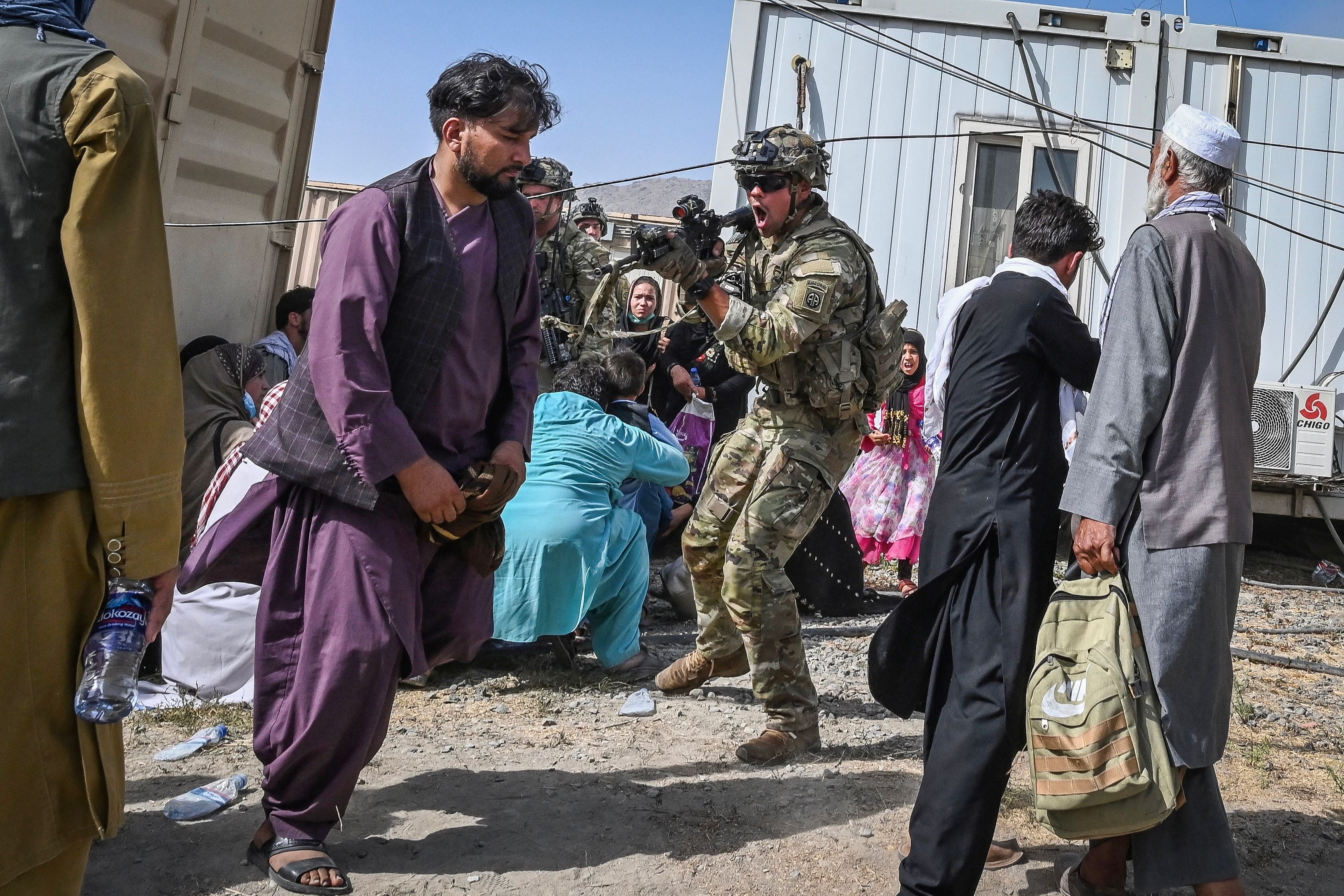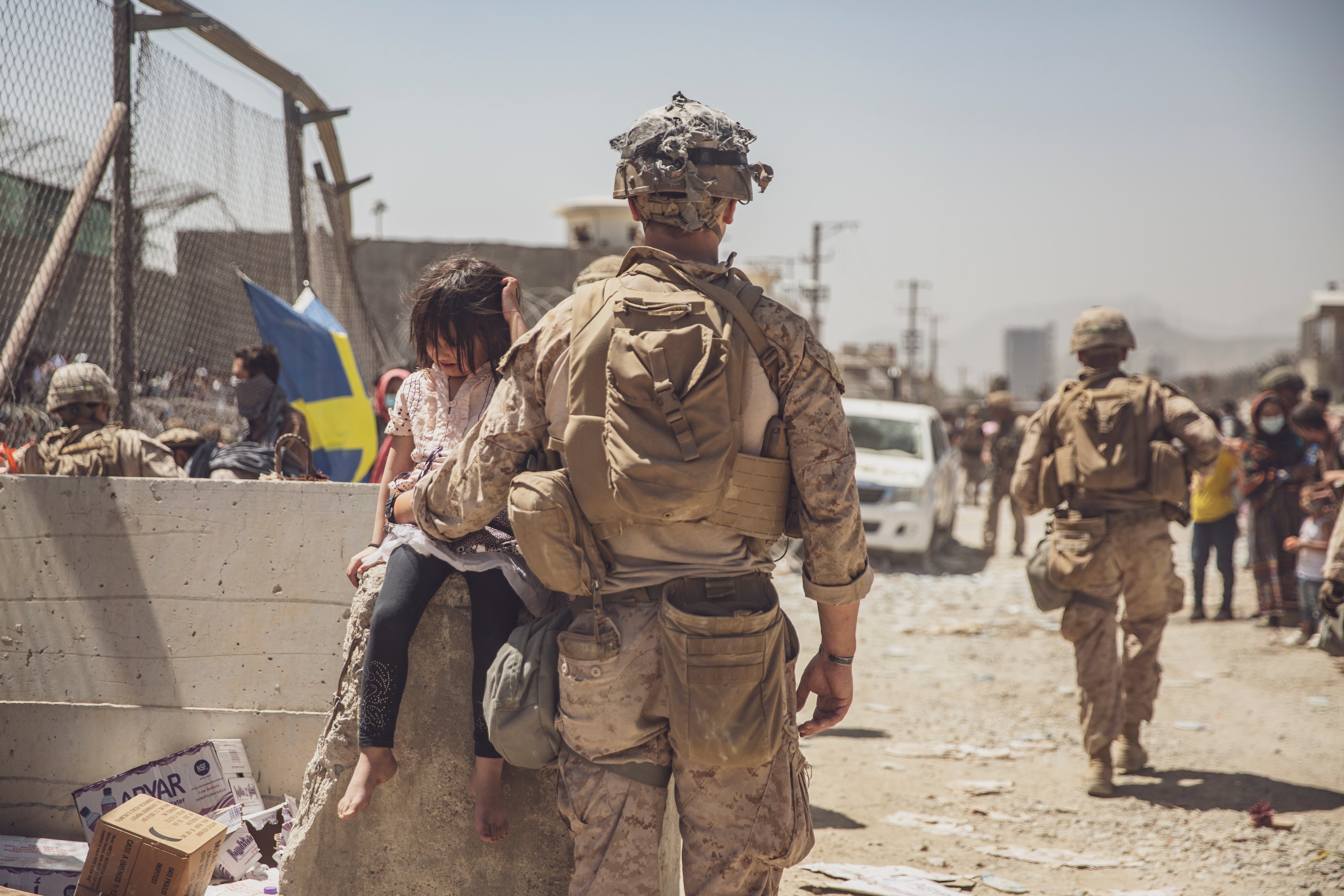Two weeks ago to the day, the chairman of the Joint Chiefs told reporters it was too soon to start the after-action reports on what went wrong in 20 years of deployments to Afghanistan. Wednesday, days out from the final flight of U.S. troops out of Kabul’s airport, Pentagon leadership signaled its time to get to work.
While the evacuation operation at Hamid Karzai International Airport successfully evacuated more than 124,000 people, effort is still shadowed by those left behind, those killed in the process and two decades of decision-making that led up to it.
“As we always do this department will look back, clearly and professionally, and learn every lesson that we can,” Defense Secretary Lloyd Austin said. “That’s our way.”
That will involve processing a lot of trauma from the previous 20 years, as well as second-guessing a lot of decisions that Austin made, including as head of U.S. Central Command — which he ran from 2013 to 2016 — and those of his top adviser, Army Gen. Mark Milley, who once commanded the international coalition in Afghanistan.
“I would just tell you that there hasn’t been a single operation that I’ve ever been involved in, where are we didn’t discover that there’s something that we could have done better or more efficiently or more effectively,” Lloyd Austin said Sept. 2, responding to a question about the chaos of the drawdown. “And I’d also say that no operation is ever perfect.”
Announced in April, the withdrawal focused primarily on troops and equipment until late July, when the Biden administration finally answered the question of whether Afghan allies would be able to rely on the U.S. to evacuate them out of the country and to safety from the Taliban.
Two weeks later, as the Taliban marched in Kabul, that effort escalated into a panic, as thousands rushed to the airport looking for a flight out. As of the Aug. 31 withdrawal, the government believes there are still several hundred Americans trapped in Afghanistan, and thousands more Afghans who worked with U.S. troops and officials.
RELATED

“My pain and anger comes from the same as the grieving families, the same as those soldiers that are on the ground,” Milley reporters on Wednesday. “Last night I visited the wounded up at Walter Reed [National Military Medical Center]. This is tough stuff. War is hard. It’s vicious. It’s brutal. It’s unforgiving. And yes, we all have pain of anger. And when we see what has unfolded over the last 20 years, you know, the last 20 days, that creates pain and anger. And mine comes from 242 of my soldiers killed in action over 20 years in Iraq and Afghanistan.”
He didn’t elaborate as to where he directs that anger, but missteps in Afghanistan have been long since documented, in Special Inspector General for Afghanistan Reconstruction reports and elsewhere.
“We can learn from this experience as a military, how we got to this moment in Afghanistan will be analyzed and studied for years to come, he said. “And we in the military will approach this with humility transparency and candor.”
Austin and Milley’s main message was to the families of the fallen and to the veterans struggling with their role in the 20-year conflict, which now sees the Taliban back in control of the country.
“One thing I am certain of , for any soldier, sailor, airman orMarine, and their family: Your service mattered. And it was not in vain,” Milley said.
Meghann Myers is the Pentagon bureau chief at Military Times. She covers operations, policy, personnel, leadership and other issues affecting service members.
